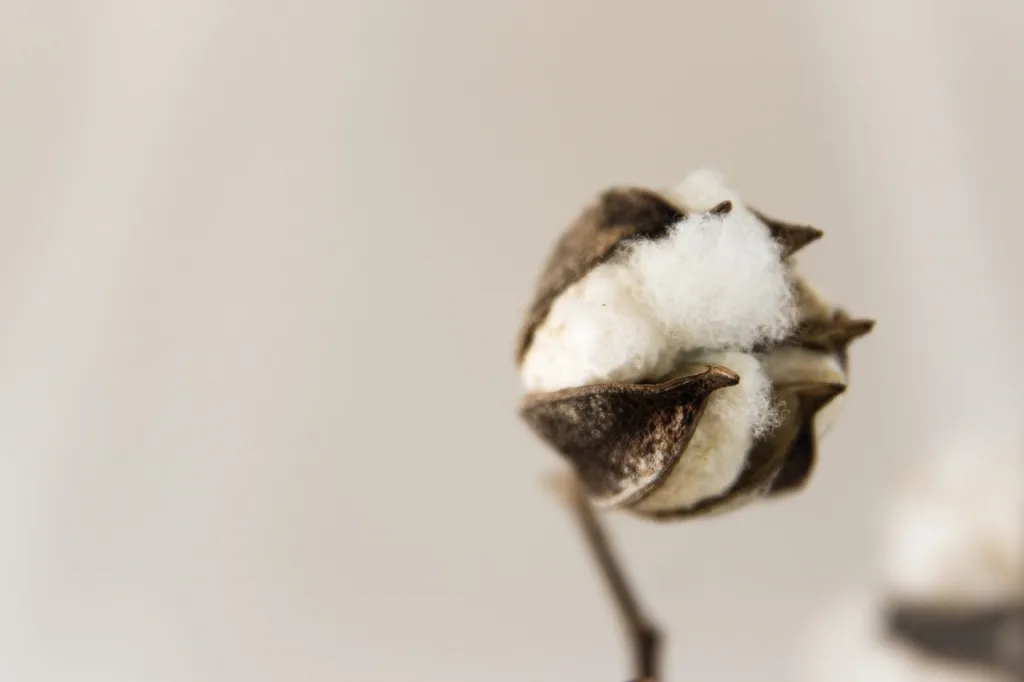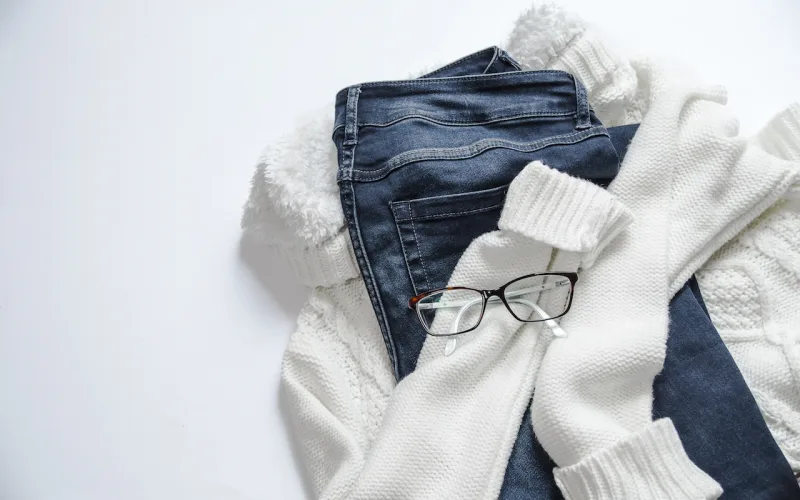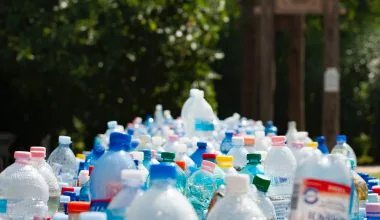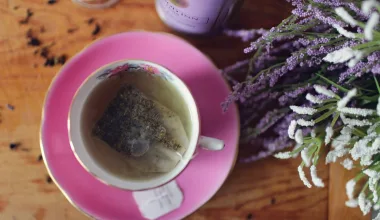Last Updated on October 10, 2025 by Ecologica Life
If you like fashion, that’s great. Unfortunately, the textile industry has many problems, from being a major emitter of greenhouse gases to microplastic pollution and even slavery.
In this article, we’ll take a brief look at the problems with the textile industry, and what sustainable clothing alternatives are available to you.
Table of Contents
Negative Impacts of the Fashion Industry
Data published in the Ellen MacArthur Foundation’s 2017 report, A New Textiles Economy, shows that carbon emissions from textiles totalled 1.2 billion tonnes of CO2 equivalent in 2015.
Demand for clothing continues to grow rapidly, especially in places like Asia and Africa. On the current trajectory, clothing sales could triple by 2050. This would account for more than 26% of our carbon budget associated with keeping the global warming increase below 2ºC.

It’s not just emissions – the textile industry is associated with many negative impacts on farmers, factory workers and the environment. Data from a 2012 article published in Natural Science reported that 20% of global industrial water pollution comes from textile dyeing and treatment.
Microplastic pollution is a growing concern that has only been discovered and studied in the last few decades. We now know that microplastics are leaking from many household items, including baby bottles. The ocean is full of microplastic particles and they have even been found in our blood.
Research suggests that 35% of all microplastics in the world come from our clothes. It is estimated that around 500,000 tonnes of plastic microfibres enter the oceans every year as a result of washing plastic textiles such as polyester, nylon or acrylic.
Today’s textile industry has many negative impacts on local communities. All parts of the supply chain are often under intense time and cost pressures. This can result in workers enduring dangerous working conditions, long hours and low pay. There have even been cases of modern slavery and child labour.
Sustainable Fashion
Fortunately, consumers are becoming increasingly aware of what they buy and where and how it is made. Sustainable fashion (eco-fashion) is a term used to describe clothing products that are made in circumstances that are better for the planet and for the people who make them.
But beware of greenwashing. In 2020, it was noted that previous efforts to reform the textile industry have failed. Unfortunately, many fashion brands pretend to be moving to greener practices when they are not. If you can, do your research before you buy.
Sustainable and Eco-Friendly Fabrics
However, if you want to use your money to buy greener, here is a list of some of the most sustainable and eco-friendly fabrics that are already on the market.
Organic Hemp

A versatile plant, hemp can be used to make a wide range of products including food, building materials, cosmetics, and textiles. It is one of the oldest textiles still in use today because it can be used all year round. Unlike other fabrics, it also softens with washing.
Hemp is also a relatively low-maintenance crop. It is inherently environmentally friendly, requiring little water and no pesticides.
When grown organically, without the use of chemicals to speed up the process, hemp is a completely sustainable fabric.
Organic Cotton

Cotton is a natural fibre and one of the most popular fabrics, but when processed in the traditional way it can be very problematic. It requires a lot of water and chemicals, both of which can be harmful to the environment.
Organic cotton production, on the other hand, does not use the chemicals used in conventional organic farming. Look for labels that certify organic cotton, such as the Global Organic Textile Standard (GOTS) on clothing.
The following list of cotton fabrics is presented in general order from most sustainable (top) to least sustainable (bottom).
- Recycled cotton: mechanically recycled from pre- or post-consumer waste.
- Organic cotton: grown without synthetic fertilizer and pesticides.
- In-transition cotton: cotton produced by farmers moving towards organic practices.
- Conventional cotton.
Organic Linen
The benefits of organic linen are very similar to those of hemp. Linen comes from the flax plant, which like hemp has a long history of cultivation, requires little maintenance, and decomposes naturally if left untreated. Linen is also delicate, lightweight, durable, and naturally resistant to moths!
There is very little plant waste as linen can be made from any part of the plant. Although the production process involves a fair amount of mechanical labour and generates some emissions, it is still one of the greenest materials available. Furthermore, these emissions can be reduced by switching to renewable energy sources.
Lyocell
Lyocell is a than fabric made from wood pulp that is highly absorbent, anti-bacterial, odourless and moisture resistant. It is biodegradable because wood pulp is a plant-based material, which contributes to its sustainability as a fabric.
Wood pulp must be chemically digested to produce cellulose fibres, but the water and chemicals used in the process can usually be recycled. This greatly reduces the amount of new chemicals and water needed for production.
Recycled Fabrics
Recycled fabrics (such as recycled cotton) are made from materials that would have gone to landfills. This is good for reducing waste, but it is not the most environmentally friendly. For example, recycled polyester is made from plastic bottles. While this reduces plastic waste, it releases microplastics when washed, which can end up in the ocean.
Unsustainable Fabrics
Polyester
The term “polyester” is an abbreviation for any material made from a synthetic, man-made polymer. It is a type of plastic and is usually made from petroleum-based raw materials, although it can also be made from recycled plastic, crops or even waste. Plastic fibres naturally contribute to plastic pollution.
What about Plant-Based Polyester?
You may have noticed that I mentioned that polyester can be made from crops instead of petroleum-based raw materials. This is called bio-based polyester, and while it sounds more sustainable, the reality is nuanced.
Bio-PET, made from sugarcane or corn, is chemically identical to fossil-based polyester. It reduces the reliance on petroleum and can lower greenhouse gas emissions if responsibly sourced – especially when using agricultural waste. But it still doesn’t biodegrade and sheds microplastics jsut like conventional polyester.
Biodegradable bio-polyesters like PLA (polylactic acid) can break down under industrial composting conditions. These offer a potential reduction in long-term microplastic pollution, but only if properly disposed of – and they may still shed microfibres during washing.
The takeaway? Bio-based polyesters can improve sourcing and lower carbon footprints, but most still contribute to the microplastic problem. Look for tighter weaves, compostable alternatives, and washing filters.
Is Biodegradable Plastic a Myth?
Nylon
Nylon is a smooth thermoplastic that can be melted and converted into textile fibres. It is often produced from fossil fuels.
Acrylic
This textile is made from synthetic fibres produced by burning fossil fuels such as petroleum.
Traditional Cotton
This natural fibre is problematic due to high water consumption, high levels of pesticides and pollution from over-farming. Organic cotton farming is much more environmentally friendly.
Rayon
This fibre is made from natural wood pulp but must first be converted into cellulose using toxic chemicals such as sulphuric acid and chlorine. These chemicals can linger on the clothing causing wearers to suffer from nausea, vomiting, headaches and chest pains.
Reuse and Recycle Clothes
Fast fashion is a new phenomenon in the fashion industry. It is characterised by low-cost, trendy clothing that responds quickly to customer demand by stealing design cues from catwalk celebrities or fashion culture and bringing them to the high street. The aim is to get the latest trends out as quickly as possible so that consumers can buy them while they are still fashionable and then, unfortunately, discard them after a few wears for the next trend.
Research has shown that the single most important way to be environmentally friendly when it comes to clothing is to use your clothes until they are completely worn out. Data suggests that clothes can be worn at least 100-200 times before they are worn out (with some garments lasting much longer!).
You can extend the life of your unwanted clothes by giving or selling them to someone else. You can also buy clothes second-hand. Try to buy your clothes locally to reduce your carbon footprint from transport emissions.
If your clothes are simply too worn out to give away. Recycle them! Many countries now have designated recycling points or centres for textiles to recycle them.
This will give them an extra life; recycling produces much lower emissions than making them from scratch.
Another option is to repair your clothes. Learn to sew! Alternatively, you can take them to a tailor or cobbler to have them repaired. Some retailers also offer repair services.
Let me know what you think about sustainable clothing and any tips or tricks you might have.








